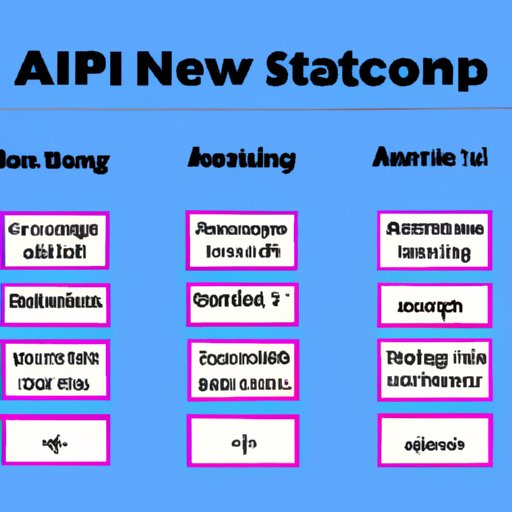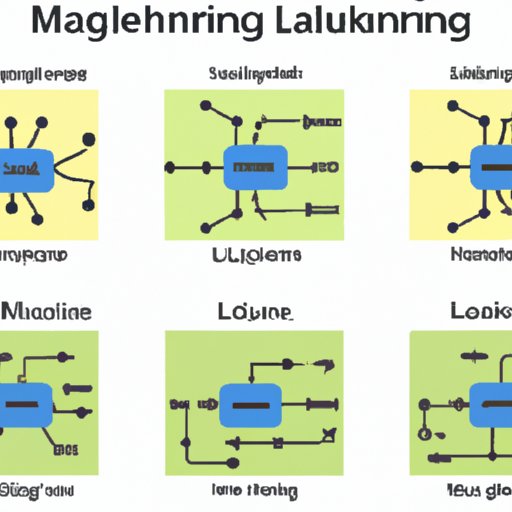Introduction
Artificial Intelligence (AI) is a field of computer science that focuses on creating intelligent machines that can think and act like humans. AI systems are capable of making decisions, solving problems, and learning from their mistakes. Machine learning is a subset of AI that focuses on teaching computers how to learn from data and make predictions without being explicitly programmed. In this article, we will explore the steps for creating an AI that learns and the types of machine learning algorithms that can be used.

Steps for Creating an AI that Learns
The process of creating an AI that learns involves several steps. The first step is to gather and prepare the data that will be used to train the AI model. This includes identifying relevant data sources, cleaning and preprocessing the data, and organizing the data into a structure that can be used by the AI model. Once the data has been gathered and prepared, the next step is to choose a machine learning model. There are a variety of models available, each with its own strengths and weaknesses. After selecting a model, it must be trained using the data. This process involves adjusting parameters, optimizing for accuracy, and validating the results. Once the model has been trained, it must be evaluated to determine its accuracy. Finally, the model must be deployed so that it can be used in real-world applications.

Types of Machine Learning Algorithms
There are three main categories of machine learning algorithms: supervised learning, unsupervised learning, and reinforcement learning. Supervised learning algorithms are trained using labeled data sets, which are data sets where each example is labeled with the correct output. Unsupervised learning algorithms are trained using unlabeled data sets, where no target output is provided. Reinforcement learning algorithms learn through trial and error, using rewards and punishments to adjust their behavior over time. Each type of algorithm has its own advantages and disadvantages, and the best algorithm for a given task will depend on the data and the desired outcome.

Creating Datasets for Training AI Models
In order to create effective AI models, it is important to have a properly structured dataset that contains enough information to accurately represent the problem. This requires identifying relevant data sources, collecting the data, and preprocessing it to ensure that it is clean and organized. Preprocessing can involve cleaning the data to remove any errors or outliers, normalizing it to make sure all values are within the same range, and transforming it into a format that can be used by the AI model.
Evaluating AI Models
Once the AI model has been trained, it needs to be evaluated to determine its accuracy. This can be done by measuring the performance of the model on unseen data, such as a test set. The performance can be measured using a variety of metrics, such as precision and recall. Additionally, the model can be tested against known datasets to determine its accuracy. This will help identify any areas where the model may need to be improved.
Applying AI Models to Real-World Problems
Once the AI model has been trained and evaluated, it can then be applied to real-world problems. This involves identifying potential use cases, such as predicting customer churn or forecasting sales. Then, solutions can be implemented using the AI model to solve the problem. This could involve creating a web application or integrating the model into an existing system.
Deploying AI Models into Production
The final step in the process of creating an AI that learns is deploying the model into production. This involves building the necessary infrastructure and assessing security requirements. Once the infrastructure is in place, the model can be tested to ensure that it is performing as expected. Finally, the model can be deployed and made available to users.
Conclusion
In this article, we discussed the steps for creating an AI that learns, the types of machine learning algorithms, creating datasets for training AI models, evaluating AI models, applying AI models to real-world problems, and deploying AI models into production. By following these steps, developers can create AI models that can accurately solve real-world problems. The benefits of programming AI that learns include improved decision making, increased efficiency, and better customer service.
(Note: Is this article not meeting your expectations? Do you have knowledge or insights to share? Unlock new opportunities and expand your reach by joining our authors team. Click Registration to join us and share your expertise with our readers.)
